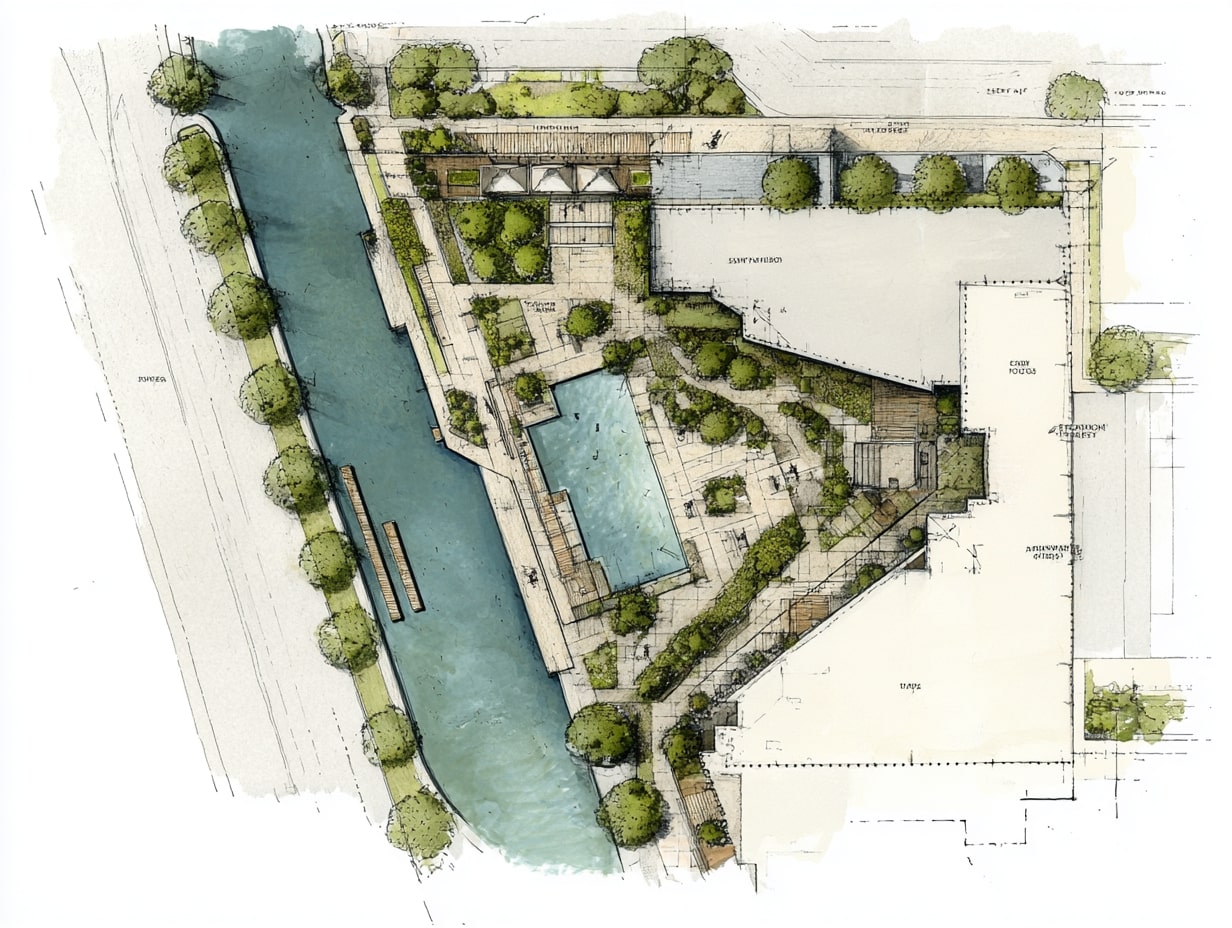- Home
- Articles
- Architectural Portfolio
- Architectral Presentation
- Inspirational Stories
- Architecture News
- Visualization
- BIM Industry
- Facade Design
- Parametric Design
- Career
- Landscape Architecture
- Construction
- Artificial Intelligence
- Sketching
- Design Softwares
- Diagrams
- Writing
- Architectural Tips
- Sustainability
- Courses
- Concept
- Technology
- History & Heritage
- Future of Architecture
- Guides & How-To
- Art & Culture
- Projects
- Interior Design
- Competitions
- Jobs
- Store
- Tools
- More
- Home
- Articles
- Architectural Portfolio
- Architectral Presentation
- Inspirational Stories
- Architecture News
- Visualization
- BIM Industry
- Facade Design
- Parametric Design
- Career
- Landscape Architecture
- Construction
- Artificial Intelligence
- Sketching
- Design Softwares
- Diagrams
- Writing
- Architectural Tips
- Sustainability
- Courses
- Concept
- Technology
- History & Heritage
- Future of Architecture
- Guides & How-To
- Art & Culture
- Projects
- Interior Design
- Competitions
- Jobs
- Store
- Tools
- More
How to Create Impressive Architecture Work Samples That Stand Out
Discover how to curate exceptional architecture work samples that showcase creativity, technical expertise, and design vision. Learn tips for selecting diverse projects, organizing portfolios, and tailoring presentations to captivate employers, clients, and collaborators. Craft a standout collection that highlights your unique strengths and builds credibility in a competitive industry.

When it comes to showcasing our skills as architects, nothing speaks louder than a well-curated collection of work samples. These samples are more than just a portfolio—they’re a window into our creative process, technical expertise, and unique design perspective. They tell the story of our journey and demonstrate how we bring ideas to life.
In a competitive field like architecture, our work samples can set us apart. Whether we’re presenting to potential employers, clients, or collaborators, these examples help communicate our vision and capabilities effectively. The right selection doesn’t just show what we’ve done—it highlights what we can do and why we’re the perfect fit for any project.

Table of Contents
ToggleImportance Of Architecture Work Samples
Architecture work samples demonstrate an architect’s expertise, creativity, and problem-solving skills. These curated examples provide tangible evidence of technical abilities and design thinking, tailored to specific audiences like employers or clients.
Hiring managers rely on work samples to assess an architect’s proficiency in areas such as drafting, 3D modeling, rendering, and project management. For instance, presenting clear construction drawings or detailed technical sections validates competency in structural integration.
Clients view these samples as proof of an architect’s ability to deliver functional and aesthetically pleasing designs. Residential, commercial, or landscape project examples help establish credibility and trust for future collaborations.
In competitive markets, high-quality samples highlight unique approaches. Incorporating varied project types, such as mixed-use designs or urban planning, strengthens the architect’s appeal to diverse stakeholders.
Key Elements Of Effective Architecture Work Samples
Effective architecture work samples combine aesthetic appeal, clear communication, and technical expertise. These elements ensure that the samples resonate with diverse audiences and highlight an architect’s unique abilities.

Visual Presentation
Visual clarity and organization define impactful architecture work samples. A consistent layout, high-quality images, and legible formatting improve readability. Selecting clear diagrams, compelling renders, and professional photography ensures the work is visually appealing. Including concise visual annotations, such as labels or captions, adds context.
Project Descriptions
Concise, informative descriptions complement the visuals. Each project description should outline the project’s goals, constraints, and how challenges were addressed. Including details on roles, processes, and outcomes illustrates both individual contribution and overall project success. Avoid excessive technical jargon unless it’s vital for comprehension.
Technical Drawings And Models
Accurate and detailed technical drawings provide evidence of architectural competence. Floor plans, sections, and elevations demonstrate precision and adherence to design standards. Including 3D models or renderings adds depth by showing spatial relationships and materiality. If applicable, show variations or iterative design progress to highlight adaptability.
Creativity And Innovation
Highlighting inventive solutions and unique designs captures attention. Showcasing experimental concepts, creative use of materials, or adaptive reuse projects emphasizes visionary thinking. Demonstrating innovative technology applications, such as parametric modeling or sustainable systems, positions an architect as forward-thinking.
Types Of Architecture Work Samples To Include
Including diverse architecture work samples highlights our skills, experiences, and creative capabilities. Tailoring these samples to different audiences ensures relevance and impact.

Academic Projects
Academic projects demonstrate foundational skills acquired during education. These include conceptual designs, thesis works, or studio projects. For example, detailed site analyses or urban housing designs showcase methodical research and problem-solving abilities. Including final models, renderings, and technical drawings highlights precision and attention to detail.
Professional Work
Professional work highlights real-world experience and expertise. Completed building designs, renovations, and large-scale projects provide tangible proof of our capability to meet client requirements. For instance, construction drawings, interior layouts, or structural details emphasize our understanding of industry standards and practical execution.
Personal Design Projects
Personal design projects reflect creativity and individuality. Uncommissioned works, exploratory designs, or competition entries illustrate our passion and willingness to innovate. For example, a futuristic concept model or speculative urban planning proposal adds uniqueness to our portfolio, giving insights into our artistic perspective.
Collaborative Projects
Collaborative projects illustrate teamwork and adaptability. Joint ventures, interdisciplinary works, or contributions to larger projects emphasize our ability to coordinate and integrate ideas with others. Documentation showing our role in sustainable community designs or cross-functional planning showcases both collaboration and leadership skills.
Tips For Creating Impressive Architecture Work Samples
Impressive architecture work samples highlight technical ability, creativity, and professional focus. Thoughtful presentation and content selection enhance engagement and credibility.

Highlight Your Strengths
Select projects that showcase unique skills and expertise. For example, include work demonstrating mastery in sustainable design, advanced rendering, or urban planning when relevant. Use concise descriptions to emphasize key contributions and impacts, ensuring each sample reflects the highest level of craftsmanship and innovation.
Tailor To The Audience
Adjust samples to align with the needs of specific audiences. For potential employers, feature projects that emphasize technical proficiency and collaborative experience. For clients, highlight completed designs that showcase creative problem-solving and functionality. Including contextually relevant samples helps establish trust and makes a stronger impression.
Maintain Consistency And Organization
Organize work samples with a clean, cohesive format. Use the same font, color scheme, and layout throughout to ensure visual harmony. Maintain clear labeling and logical sequencing to improve navigation. High-resolution images and deliberate spacing enhance readability, ensuring key details are easy to identify.
Best Practices For Organizing Your Portfolio
An organized portfolio showcases architectural skills effectively and leaves a lasting impression on potential clients or employers. Proper structuring ensures clarity, professionalism, and coherence.

Digital Portfolio Layouts
A digital portfolio should prioritize simplicity and functionality to provide a seamless viewing experience. Arrange projects in a logical sequence, such as chronological order or by project type, to guide viewers intuitively. Maintain a consistent layout using clean grids and uniform fonts to enhance navigation.
Incorporate interactive elements, like hyperlinks or embedded videos, sparingly to elevate engagement if they align with the portfolio’s tone and purpose. Optimize file sizes to ensure fast loading times, keeping the total file size under 10 MB for easier sharing. Use high-resolution images, but compress them appropriately to balance quality and performance.
Select a widely accessible format, such as PDF for emails or web-based platforms like Behance or personal websites, to maximize reach. Tailor digital portfolios to specific audiences by creating separate files or pages, focusing on technical details for employers and creative solutions for clients.
Physical Portfolio Design
A physical portfolio demands attention to its tactile and visual characteristics. Choose high-quality materials, such as durable covers and professional-grade paper, to convey care and attention to detail. Use a consistent design language, with cohesive color schemes and labels, to create a polished appearance.
Organize projects in clear sections with dividers or tabs to ensure easy navigation during presentations. Keep text concise and let visuals dominate, using full-page images or spreads for impactful designs. Include printed versions of key plans and drawings for added depth, ensuring clarity with proper scaling.
Format the physical portfolio for portability, ideally in sizes between 8.5″x11″ and 11″x17″, to balance detail and convenience. Ensure universal readability by previewing with multiple audiences and refining based on feedback.
Conclusion
Architecture work samples play a pivotal role in defining an architect’s professional identity and showcasing their abilities to various stakeholders. By carefully selecting and organizing work samples, we effectively communicate our design philosophy, technical expertise, and creativity. Tailoring these samples to fit our intended audience maximizes their impact, whether addressing potential employers, clients, or collaborators.
Incorporating diverse project types—such as academic designs, professional work, personal creations, and collaborative endeavors—helps highlight our range of skills. Structuring portfolios with visual clarity and cohesive formatting ensures an engaging presentation that leaves a lasting impression. High-quality images, concise project descriptions, and attention to detail bolster credibility and establish trust.
We enhance the presentation of digital portfolios with intuitive navigation and optimized media. For physical portfolios, maintaining a polished and professional look reflects our commitment to quality. By implementing strategies for consistency, relevance, and clarity, we strengthen the ability of our work samples to resonate with diverse audiences.
- architecture portfolio content ideas
- architecture portfolio layout tips
- architecture portfolio presentation
- architecture portfolio tips
- architecture project showcase
- architecture work sample formatting
- architecture work sample ideas
- best practices for architecture portfolios
- building a strong architecture portfolio
- creating standout architecture samples
- creative architecture samples
- making architecture work samples stand out
- professional architecture portfolio design
- showcasing architectural designs effectively
- showcasing architectural projects
- tips for architecture students' portfolios
- tips for architecture work presentation
Submit your architectural projects
Follow these steps for submission your project. Submission FormLatest Posts
General Arrangement Drawings in Architecture: The Backbone of Clear Design Communication
General Arrangement Drawings explained: what they are, when to use them, how...
The Ultimate Guide to Fencing in North Dakota: Choosing the Best Fence for Your Property
Watching a chain link fence twist in 70 mph winds near Minot...
Gaudí: Where Architecture Meets Science
Gaudí: Where Architecture Meets Science shows catenary arches, ruled surfaces, and biomimicry...
How Housing Market Forces Shape Architectural Design Today
Architecture never exists in isolation. Buildings rise from a mix of ambition,...












Leave a comment